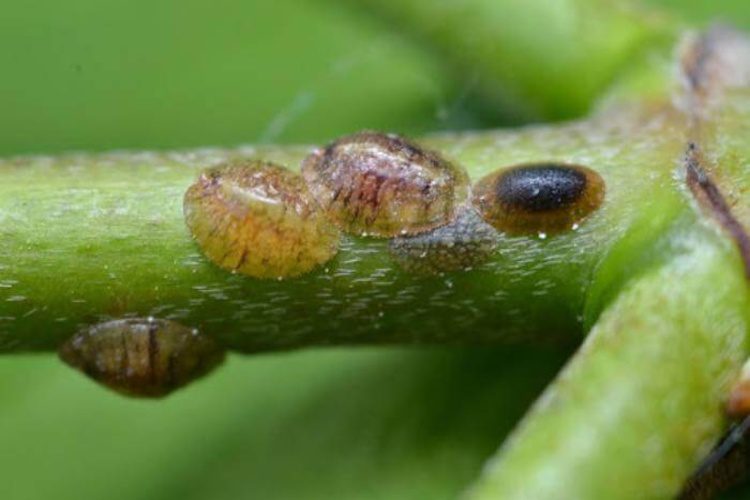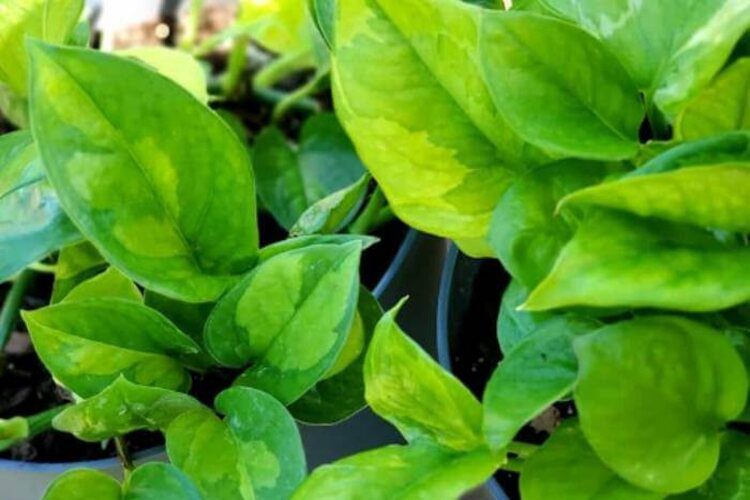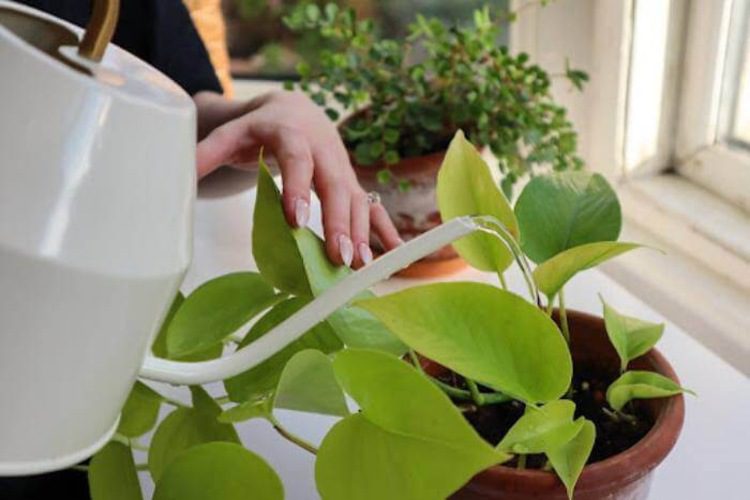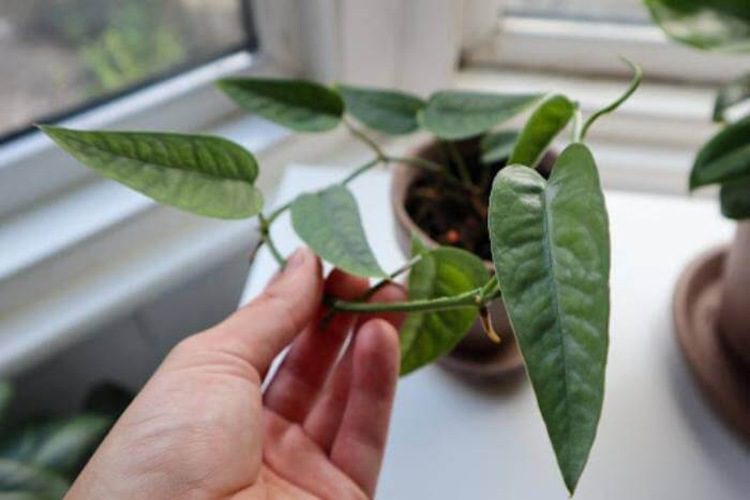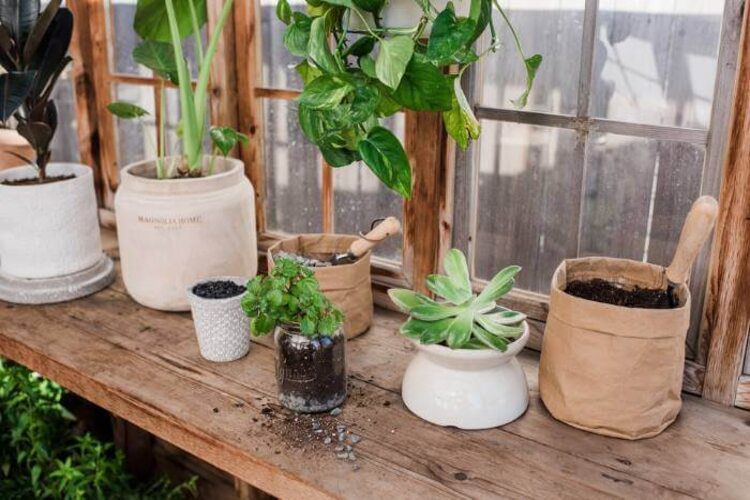Marble Queen Pothos Care: The Ultimate Guide
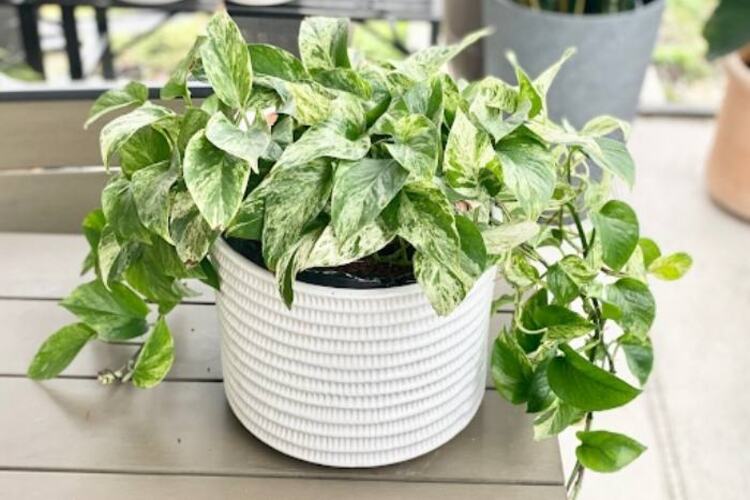
The Marble Queen Pothos is a perfect addition to any room in the home. This plant will bring life and beauty with its verdant leaves. If you’re looking for a plant that is low maintenance and can thrive in a variety of conditions, then the Marble Queen pothos is a great option.
However, even though this plant is relatively easy to take care of, you should know a few things to keep it happy and healthy.
In this article, we will go over the basics of caring for your pothos plant. We will cover watering, lighting, fertilizing requirements, and how to propagate Marble Queen pothos. By the end, you will be an expert on plant care!
| Scientific Name | Epipremnum aureum |
| Common Name | Money plant, Marble Queen pothos, Devil’s Ivy |
| Family | Araceae |
| Origin | South Asia, Southeast Asia, Australia, and Northern South Africa |
| Plant Type | Perennial vine |
| Bloom Time | Spring, summer |
| Flower Color | White, green |
| Soil | Fast-draining, loamy, moist soil |
| Water | Maintain lightly moist |
| Temperature | 65-90°F |
| Sunlight | Low, bright, indirect light |
| Toxicity | Calcium oxalate crystals |
About Marble Queen Pothos
The Marble Queen pothos is a beautiful, hardy, and easy-to-grow houseplant. The leaves are glossy and variegated with shades of green, white, and yellow. In addition to Marble Queen Pothos, there is also a variety called Snow Queen Pothos. The only difference between the two varieties is the color of their leaves. Snow Queen is also a bit more sensitive to overwatering than its variety.
Hence, Marble Queen Pothos is an excellent choice for beginners, as it tolerates neglect. It can be grown as an indoor or outdoor plant and will quickly fill out a pot or space with its long, trailing vines. It does well in bright or indirect sunlight and is moist in drier soil. This type of Pothos is not only beautiful, but it is also beneficial to your health. It has been proven to remove harmful toxins from the air and prevent problems with allergies or asthma.

Marble Queen Pothos Care
This pothos is a beautiful variety with dark green leaves streaked with creamy white veins. They are hardy plants that don’t require much care. But they need love and attention to thrive at their best! To care for this plant, you will need to consider all aspects of its growth, including:
Light
Light is one of the most important factors in growing a healthy Marble Queen. They like bright, indirect natural light. If you are growing your plants indoors, place them near a window where they will receive plenty of indirect lighting.
If you notice your Marble Queen leaves turning yellow during the day, this is a sign that it is receiving too much direct sunlight. Move it to a location with more indirect light to prevent further damage to its leaves.
Soil
You can purchase premixed potting soil or make your own by mixing equal parts perlite, vermiculite, and peat moss. These tropical plants prefer a well-draining soil mix. Also, add a layer of gravel to the bottom of your pot to help with drainage holes.
Watering
Marble plants are drought-tolerant and only need to be watered when the soil is dry to the touch. During the growing season (spring and summer), you must water your plant about once a week.
Check the soil moisture before watering to avoid overwatering, which can lead to root rot. In the winter, you can reduce your watering schedule to once every two weeks.
Fertilizer
Fertilizer is not generally necessary for Marble Queen plants, as they can get the nutrients they need from a loamy potting mix. However, fertilizing them regularly during the growing season can help promote vigorous growth. If necessary, fertilize them once per month with a general-purpose liquid fertilizer during the summer and spring.

Temperature
These plants prefer average room temperatures of 65–90 °F (18–32 °C). They can tolerate a wider range of temperatures, but if the temperature dips below 55°F (13°C), the leaves will start to turn black and drop off.
Humidity
Pothos plants do not require high humidity levels and can even tolerate some drought. However, they will benefit from occasional misting, especially during the winter when the air is dry.
You can also set the plant on your pebble tray or use a humidifier to increase the humidity around it. Using a pebble tray is very simple. First, place the plant pot on top of the gravel and ensure that the soil will remain above water level to prevent any excess moisture from accumulating around its roots! Then, watch as humidity increases with every sip lost by evaporating liquid—just top up whenever necessary for optimal growth rates (and safety).
Repotting
Marble Queen plants are fast-growing and must be repotted every 12–18 months, up to a year. The best way to ensure your pothos plants have the space they need is by using a pot at least one size larger than their current container.
Water the well and place it in a location with bright, indirect sunlight. When repotting, gently remove it from its pot and shake off any excess soil. If you notice signs of rot or mushiness, cut away those areas before placing them in a new mix. Next, fill the newly prepared container with fresh rooting compound ingredients.
Marble Queen Pothos Propagation
This beautiful and variegated plant is easy to propagate. You will need to stem cuttings from the original plant and allow them to root. The process of cutting and rooting this plant allows for an endless supply to grow in your garden. You’ll have new plants that are guaranteed to be identical and increase in size with time.
Follow our simple instructions below to propagate your plants.
Step 1: Cut stems from the original plant, ensuring each one has at least four or five nodes. These are the points where leaves attach to the stem, and new roots will grow.
Step 2: Remove two or three bottom leaves from each stem to get a more vigorous plant, and leave at least two leaves on top.
Step 3: To ensure that the cutting’s roots stay healthy, fill up a jar with water and place your cuttings atop it. Make sure they’re fully submerged, but the top leaves are above the water.
Step 4: Keep the jar in a well-lit area with moderate indirect light. Change the water once per week to maintain freshness.
Step 5: After about two or three weeks, your cuttings will have grown roots. At this point, you can plant them in the soil and watch as they grow into beautiful trees.
Step 6: The best way to plant a cutting is by keeping the soil moist and firm. You will want it at least two weeks before planting so that they can acclimatise themselves well enough for their new home.
The best time to propagate them is in spring or summer when the plant is actively growing. You can use any healthy stem from the plant, but choosing one with several leaves is best.
It may take a few weeks for the cutting to root, but once it does, you can transplant it into the soil and continue to care for it as you would the original plant. With patience and care, you can quickly propagate Marble Queen Pothos and enjoy its beauty for years.
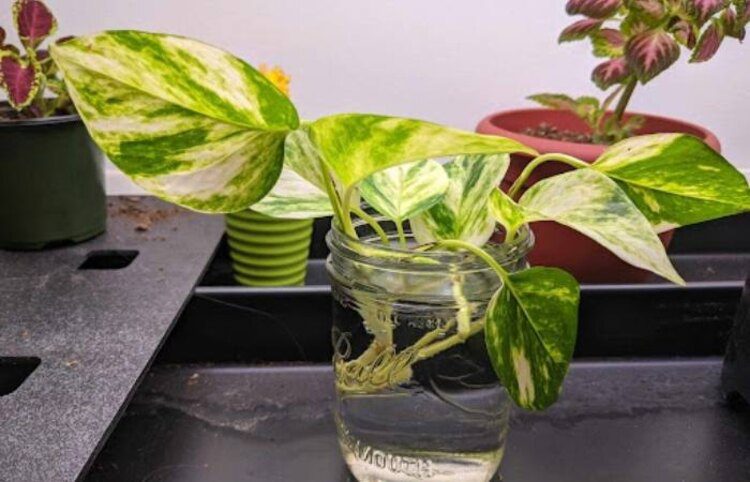
Toxicity
Pothos is a popular, low-maintenance, and easy-to-care-for houseplant. However, this tropical plant can be toxic to pets and humans if ingested. The leaves and vines of the plant contain calcium oxalate crystals, which can irritate the mouth, throat, and stomach. Ingestion of the plant may also cause vomiting and diarrhoea. If you have this plant in your home, keep it out of reach of children and pets.
Common Problems
The Marble Queen is a popular houseplant known for its trailing vines and attractive leaves. However, this plant can be prone to several problems, including:
Yellow leaves
One of the most common Pothos problems with the Marble Queen is yellow leaves. This issue can be caused by several factors, including improper watering, light, temperature fluctuations, low humidity, unbalanced soil pH, fertilizer burn, etc. If you see your plant starting to turn yellow, try adjusting its environment to see if that helps.
Brown leaves
Another common issue is brown leaves. Brown edges and leaf tips can be caused by inadequate irrigation or insufficient humidity. Ensure to water your plant regularly and avoid putting it in arid areas, such as near draughty windows and heating vents.
Green leaves
The multicolored leaves of the Marble pothos are its most prominent feature. If your plant’s leaves turn solid green, it’s not receiving enough light. Relocate your plant to a brighter location to restore the leaves’ variegation.
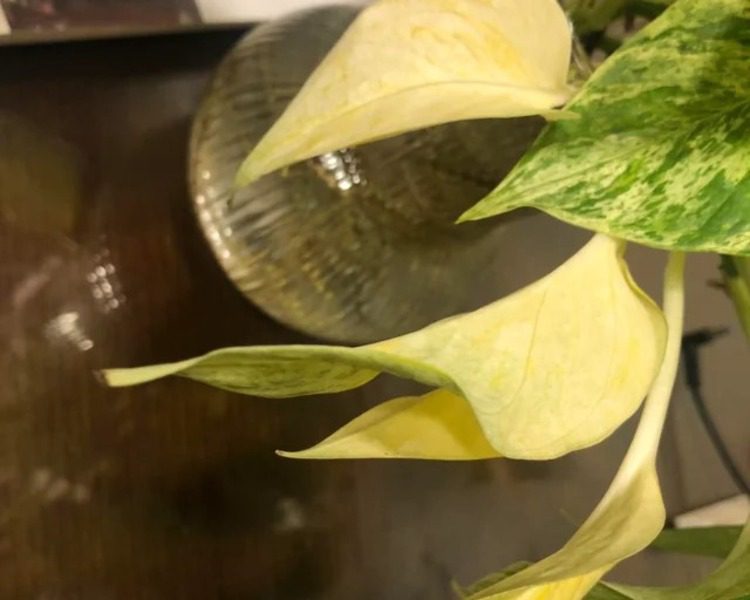
Care Tips
The Marble Queen is a popular and pretty pothos plant with gorgeous leaves. Here are some tips for growing your plant:
- This plant prefers bright, indirect sunlight.
- Keep the soil moist but not wet.
- Fertilize it every other week with a balanced fertilizer.
- Prune the plant regularly to keep it healthy and bushy.
- It is not tolerant of cold temperatures, so bring it indoors if the temperature outside drops below 55 degrees Fahrenheit.
Read more: Neon Pothos Care: The Easy Guide For Outstanding Color
Conclusion
The Marble Queen Pothos is the perfect plant for those who want to add some beauty and green to their home without taking up too much space. This beginner’s guide covers everything you need to know about growing and caring for your plants. Then, with a few tips, you will become a professional indoor gardener who will awe everyone!
FAQs




